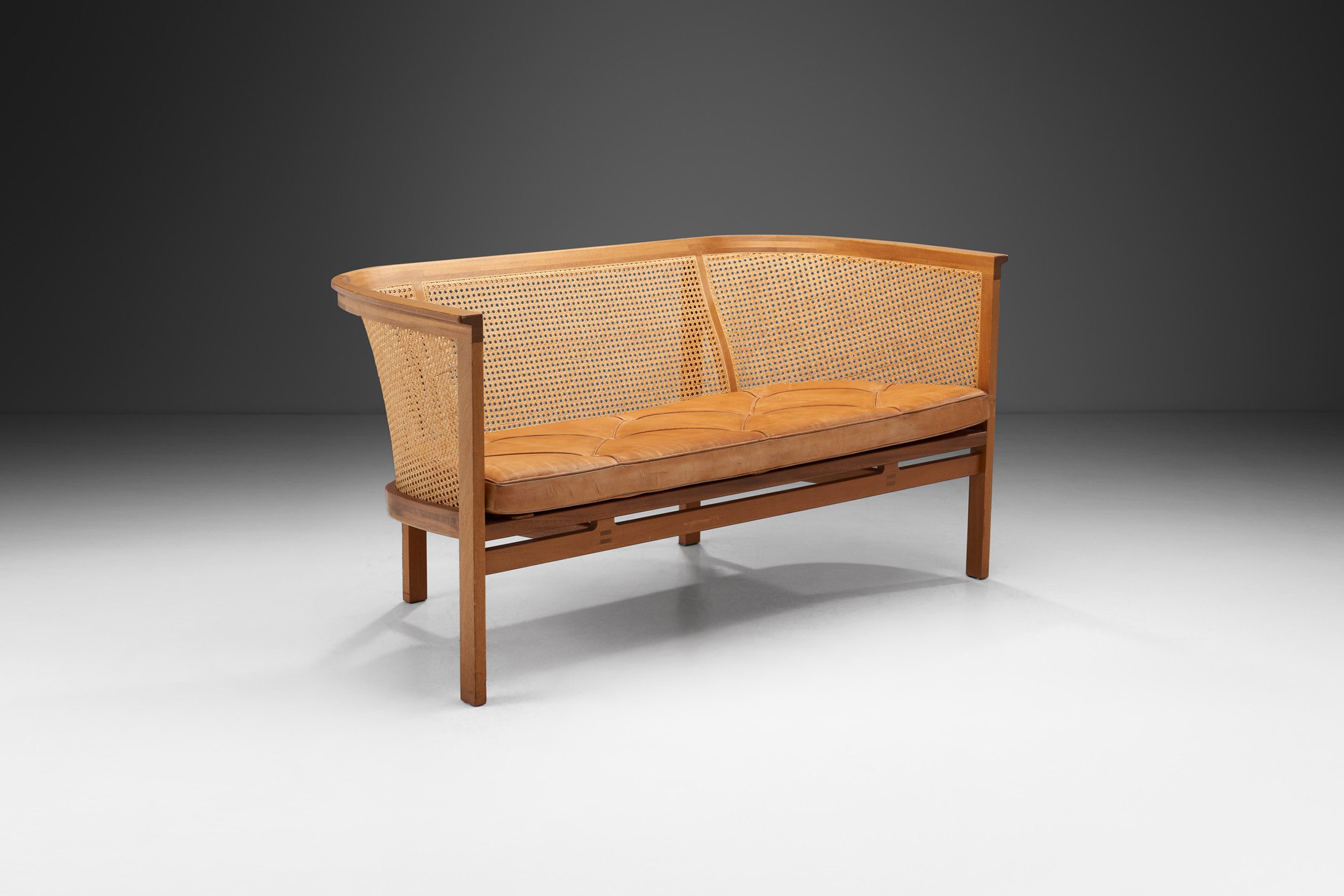Carl Malmsten Oak "Visingsö" Sofa for O.H. Sjögren, Sweden 1960s













Carl Malmsten Oak "Visingsö" Sofa for O.H. Sjögren, Sweden 1960s
REQUEST PRICE HERE
Price category: 7,500 - 10,000 usd / eur
The famous “Visingsö” series demonstrates Carl Malmsten’s fine sense of proportion, line tension and balance between the surfaces, and how skilfully he carried in the heritage of traditional allmoge (folk art) design.
This Visingsö three-seater sofa is – design-wise- in the vein of Swedish modernism, with simplicity and functionality, while also showcasing the subtle details and quality Malmsten is known and appreciated for. Even though Swedish design is generally democratic and meant for the masses, pieces were not stripped of all beauty in order to make them as easy to use as possible. The importance of this balance can be identified in the design and execution of this sofa as well: The oak spindles comprising the back are the most apparent visual feature of the design, while the more subtle details, such as the descending angle of the arms and seat framing the seat cushion make this model interesting. These details show a great balance of lines and utilization of the natural beauty of the oak. The solid wooden structure is a frame for the cushions both in a literal and figurative way. The light bouclé fabric is beautifully framed by the wood, highlighting the interesting texture of both materials. The three back and seat cushions are quite rotund; therefore, the sitting comfort is great. The three pairs of tapered legs match and highlight the spindles of the back. Malmsten’s fine sense of proportion, line tension and balance between the surfaces, and how skilfully he carried in the heritage of traditional allmoge (folk art) design is evident in this sofa.
This three-seater Visingsö sofa is an elegant and comfortable evidence of the mastery and artistry of Carl Malmsten, who defined mid-20th century Swedish modern seating. The manufacturer, O. H. Sjögren, was a renowned workshop, materializing a great deal of Malmsten’s most brilliant designs. This sofa is therefore of the highest quality, both in terms of materials and craftsmanship.
Condition:
In good vintage condition. Wear consistent with age and use. The sofa has been reupholstered recently in premium bouclé fabric. Each of our items can be re-upholstered by our in-house atelier in a fabric of choice. Please reach out for more information.
About the designer:
Carl Malmsten (December 7, 1888 – August 13, 1972) was a Swedish furniture designer, architect, and educator. Malmsten was born in Stockholm, Sweden. Malmsten's career took off when he won a competition in 1916 to design furniture for the Stockholm City Hall and shortly after, in 1917, he exhibited alongside well-known Swedish architects such as Gunnar Asplund and Uno Åhrén.
In the 1920s he was invited to furnish a room for the crown prince, Gustaf VI Adolf, and his wife Louise in Ulriksdal Palace. He was honoured with an inaugural Prince Eugen Medal for design in 1945. Already as a young designer in the early 20th century, Carl Malmsten advocated an artisanal furniture design based on local ingredients and traditions, available to a wide audience at a reasonable price.
Nature was Carl Malmsten's foremost teacher and source of inspiration. He conveyed his love of craftsmanship as a teacher in his own schools, at Olofskolan in Stockholm, Capellagården on Öland and the Carl Malmsten school on Lidingö, today a branch of Linköping University and one of the country's leading design colleges. As a debater, Malmsten stormed against functionalism, but in retrospect it can be seen that his ideas often coincided with the rational and frugal style ideals of function.
Malmsten has had a lasting influence on Swedish furniture design through the two schools he founded—the Carl Malmsten Furniture Studies (Carl Malmstensskolan), which has been a part of Linköping University since 2000, is situated on the island of Lidingö on the outskirts of Stockholm. Carl Malmsten spoke about the importance of tradition, craftsmanship and the nation. His furniture was in many ways a product of the thoughts and ideals of the time, they have a timeless quality that makes them just as relevant and loved today. ~H.












